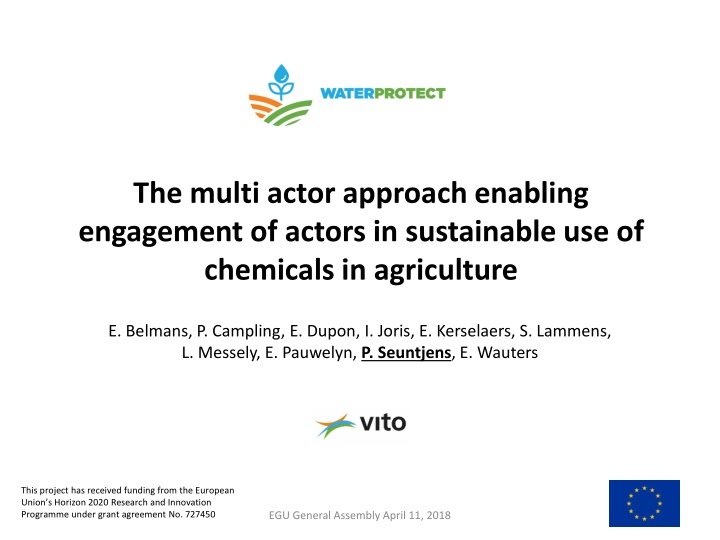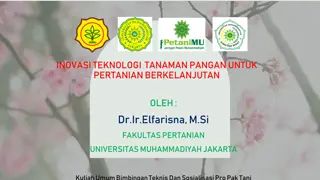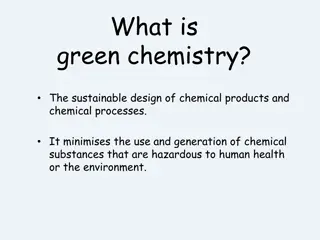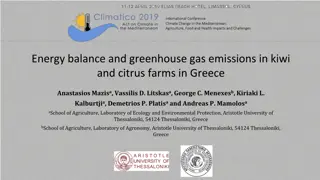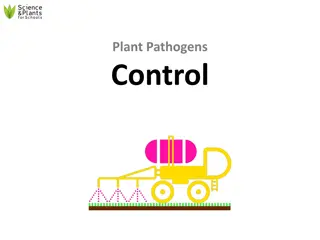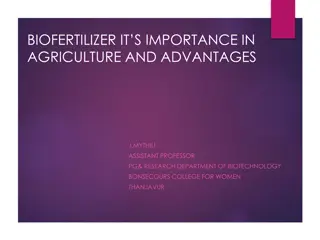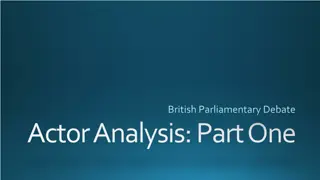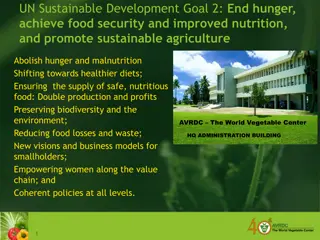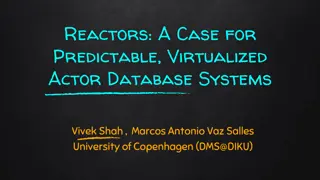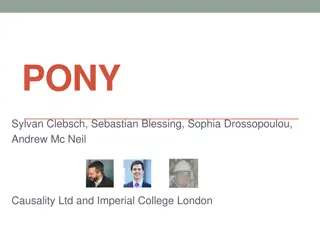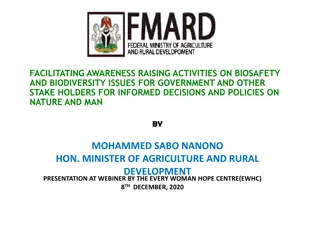Multi-Actor Approach for Sustainable Chemical Use in Agriculture
The project focuses on engaging various actors in the sustainable use of chemicals in agriculture to address the hot-spots of chemical exceedance in European groundwater. Through a multi-actor partnership and action labs, the initiative aims to implement effective management practices and mitigation measures to safeguard drinking water resources. The approach involves interdisciplinary collaboration and emphasizes transparency, equal involvement, and social dynamics for overall group functioning.
Download Presentation

Please find below an Image/Link to download the presentation.
The content on the website is provided AS IS for your information and personal use only. It may not be sold, licensed, or shared on other websites without obtaining consent from the author.If you encounter any issues during the download, it is possible that the publisher has removed the file from their server.
You are allowed to download the files provided on this website for personal or commercial use, subject to the condition that they are used lawfully. All files are the property of their respective owners.
The content on the website is provided AS IS for your information and personal use only. It may not be sold, licensed, or shared on other websites without obtaining consent from the author.
E N D
Presentation Transcript
The multi actor approach enabling engagement of actors in sustainable use of chemicals in agriculture E. Belmans, P. Campling, E. Dupon, I. Joris, E. Kerselaers, S. Lammens, L. Messely, E. Pauwelyn, P. Seuntjens, E. Wauters This project has received funding from the European Union s Horizon 2020 Research and Innovation Programme under grant agreement No. 727450 EGU General Assembly April 11, 2018
A CONTINUING CONCERN Occurrence and exceedance of selected pesticides in groundwater monitoring stations, 2010-2011 (Source: Eurostat) Hot-spots of exceedance across Europe (>0.1 g/l) Hot-spots = intensive agriculture Pollution sources are diffuse Long residence times Monitoring and treatment costly Poor information across Europe Mitigation measures are not in place, or not effective and need (farmer) engagement EGU General Assembly April 11, 2018
WE PRESENT A MULTI-ACTOR APPROACH Contribute to effective uptake and realisation of management practices and mitigation measures to protect drinking water resources We need action in the field ! Actions are centered in local Action Labs (catchment scale) EGU General Assembly April 11, 2018
ACTION LAB CONCEPT A blend of disciplines: social science, economics, engineering, agronomy, hydrology EGU General Assembly April 11, 2018
WHAT IS A TYPICAL MULTI-ACTOR PARTNERSHIP? Led by action lab leader Multi-level & multi-scale Different composition depending on location, objective, and culture EGU General Assembly April 11, 2018
MULTI ACTOR MGT PRINCIPLES A transparent and fair process Visualization of the process for better understanding An equal involvement of all actors A neutral start for the process by sharing common objectives and a common language Social and emotional dynamics to encourage overall group functioning Action lab leader Adapted from Messely, L. et al. 2013. J. Rural Studies 32, 400 410. EGU General Assembly April 11, 2018
MULTI-ACTOR IN THE BOLLAERTBEEK (BE) MAG 1 MAG 2 EGU General Assembly April 11, 2018
GOVERNANCE FRAMEWORK The water system (orange): interaction between human and water system The governance systems (blue): interactions between actor networks and the institutions Building blocks to obtain a constructive environment for development of a well-functioning governance system (green) Finding the incentives to engage actors EGU General Assembly April 11, 2018
PARTICIPATORY MONITORING Afbeeldingsresultaat voor participatory monitoring Designing, aligning and bringing together monitoring data from: Scientists Environment agencies Drinking water companies Local farmers Local citizens complexity engagement Local Afbeeldingsresultaat voor cvbb Afbeeldingsresultaat voor de watergroep labo Afbeeldingsresultaat voor testkits nitrate Local actors become more engaged in the monitoring and they trust more the results. EGU General Assembly April 11, 2018
BEST MANAGEMENT PRACTICES Engage actors to implement measures ! Diffuse sources: Bufferstrips Mgt practices Dams, pools Treatment point sources The right / accepted measures at the right places EGU General Assembly April 11, 2018
COLLABORATIVE TOOLS (APPS) Harmonised data Easy access Link action to water quality Visualise landscape Show impact of behaviour Transparency on the water system EGU General Assembly April 11, 2018
RUNNING PILOT STUDY CATCHMENT Monitoring study (2014-2018) with implementation of measures (2016-2018) the Haspengouw region in southern Limburg, intensive agriculture, mixed with residential landuse multiple pesticides detected in headwaters Cicindria catchment area: 1075 ha 72% agriculture EGU General Assembly April 11, 2018
TARGET MEASURES IN PRIORITY ZONES priority zones for measures of erosion control target farmers with a significant impact on the pesticide load to surface water encourage farmers to enter a voluntary erosion control program supported by the local government A B C Risk index EGU2018-7697 Spatial and temporal analysis of priority zones to mitigate pesticide pollution in a small catchment by Gisela Quaglia EGU General Assembly April 11, 2018
EXAMPLE CASE: FARMER ENGAGEMENT Done (2018): Installation of 15 grass bufferstrips in the priority zones. Most of the bufferstrips are 9 m, 3 of them are 21 m wide. Continued sensitization of farmers about point sources. Promoting the installation of biofilters as part of farmers advisory daily activities. 8 biofilters built. Fyteauscan app promoted. Example: zone B EGU General Assembly April 11, 2018
MONITORING 2014-2018: RESULTS EGU2019! upstream location 2014-2015: baseline 2016-2018: during and after mitigation downstream location EGU General Assembly April 11, 2018
STAY IN TOUCH water-protect.eu Follow us on Twitter: @waterprotectEU EGU General Assembly April 11, 2018
